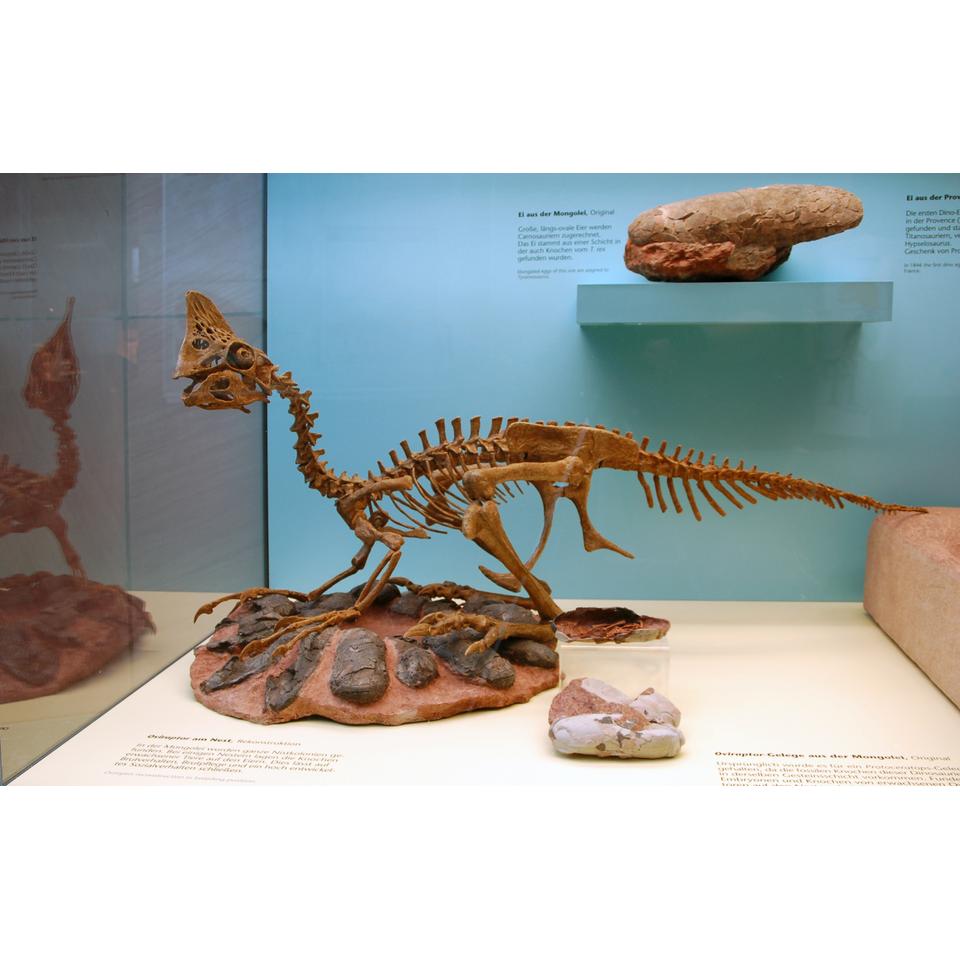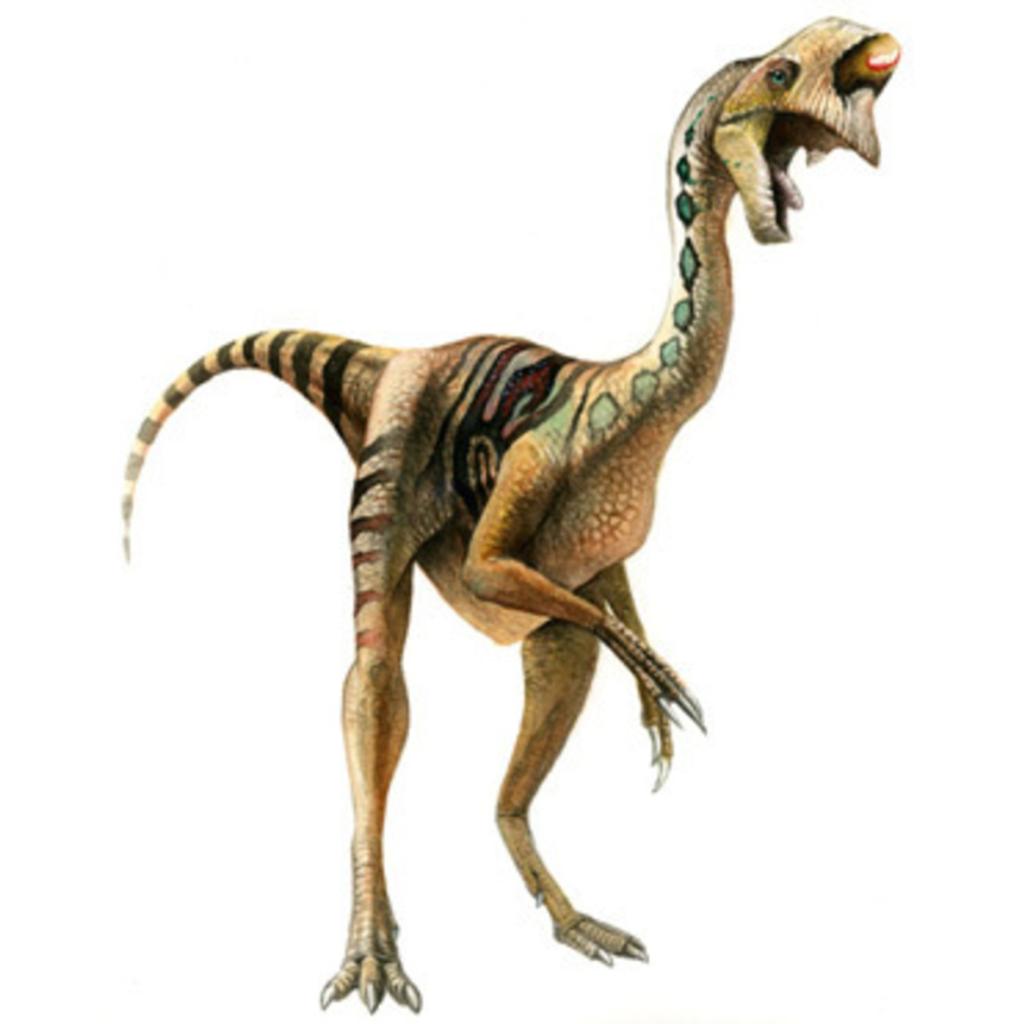Early fossil hunters were probably quite curious to know exactly what they found when they stumbled upon a crushed skull and a few bones that would later become known as the Oviraptor philoceratops. This 1932 discovery by scientists from Mongolia and the American Museum of Natural History and other finds by paleontologists during the 50 years that followed allowed for a more complete picture of this small, birdlike creature first dubbed “the egg thief.”
As it turns out, the Oviraptor’s nickname may be inaccurate. The prehistoric beast may not have stolen unhatched eggs from other nests, as has been suggested. In fact, the opposite may be true: In 1995, the American Museum of Natural History announced the discovery of a fossil of an ostrich-sized Oviraptor covering its own nest of unhatched eggs in a seemingly protective stance. Oviraptors did not look like your typical coloring book dinosaur — more like a strange science experiment where a bird and dinosaur enter the chamber from the movie The Fly. Its most distinctive feature was the rooster-like crest that attached to nostril passages on its beak. Its skull was small with large eye sockets, and its deep jaws were toothless. An adult Oviraptor may have measured about 3 feet tall and around 6 feet long. So, how did small the Oviraptor survive in the Mongolian desert with predators like the mighty Carcharodontosaurus lumbering around the neighborhood — especially with a powerful, but small, beak that served as more of a nutcracker than a predatory asset? This has been a topic of debate in the paleontological community. Some scientists say the Oviraptor was a carnivore scavenger that mostly dined on scraps from others’ kills. Others say it was an omnivorous animal that feasted on eggs, fruit, insects and hunted shellfish. Most seem to agree that the animal was an agile runner. We also know this: The two, bony spikes on the roof of its mouth leads us to believe the Oviraptor crushed its food to make it digestible.


